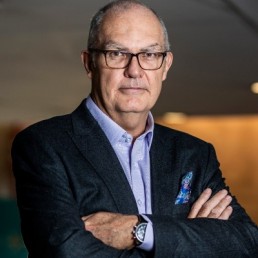This is the first in a series of interviews, in which I’ll be talking to people leading technology teams that are in sectors most affected by the COVID-19 pandemic. In my role as a CIO Advisor at IDC I have been lucky enough to talk to IT leaders across Europe, all with their own challenges but often finding that they are more alike than we might think. Martin is a CIO in the UK National Health Service in one of the largest NHS teaching trusts in England, well and truly on the “front line” in our response to the pandemic.
Who are you, what organisation do you work for and what’s your role?
I’m Martin Sadler, I work for Sandwell and West Birmingham NHS Trust, 33 locations, a number of hospitals and 800,000+ residents. I’m the CIO here but in the NHS the “I” stands for Informatics, instead of Information.
Since you joined the trust, what do you think the biggest change has been in terms of how the organisation views technology (up until the pandemic)?
I joined the Trust in September 2018 and found the department’s reputation was terrible, unfortunately this was well deserved. The biggest change my team has introduced is a focus on the end-user. They asked for reliability and responsiveness, we have provided those.
What improvements are you most proud of from your time in that role?
I’m most proud of how my team have responded to the challenge of delivering a great service and the reception they now receive from the other service areas in the Trust. We have a 24-hour service, reliable infrastructure, professional practices including change management and our users feel that we respond in a timely and appropriate way. Having fixed the fundamentals we now have a platform to do the exciting stuff and we have started on that.
What do you find surprises people about your organisation and how it uses tech?
I find people have low expectations of public sector technology experiences, they express surprise that there aren’t many national systems (let’s not open that can of worms) and also that we still are struggling to embrace technology.
How have you responded to the remote working challenge of the pandemic?
We have done really well to support our clinical services and our support services. We have tried to make sure that we keep in touch with our patients and their relatives and have embraced video calls in various forms, out-patient clinics and tablets on wards for patients to talk to people who can’t visit because of the restrictions in place to protect patients and staff from COVID-19.
Have you furloughed many IT staff – how did you manage that and how are you keeping those staff engaged?
I’m glad to say that we have not furloughed any IT staff. In fact we took some extra staff on to help roll out additional hardware quickly when the need to work remotely became urgent.
Will the effect of the pandemic change your priorities as an IT organisation?
We have completed some projects that we thought would take longer, we have learnt a lot about which systems can flex and which can’t and we have seen our users grow their digital skills. We anticipate that this will encourage our users to increase their requirements of us and we are excited about that. A great example is how we rolled out video consultations for outpatients appointments – many of these are short post-surgery reviews and it takes a lot of time and effort for patients to come to the hospital for what can be a ten-minute conversation. Providing a video option means far fewer missed appointments and less time investment for patients too. Our feedback about this service from patients is excellent. Otherwise, our priorities continue to mirror those of the organisation as a whole and our desire to integrate care delivery continues.

